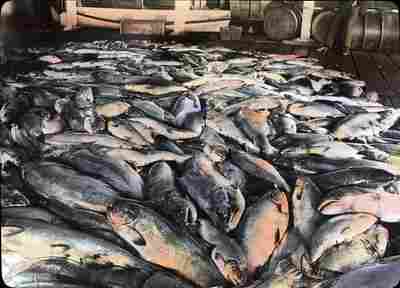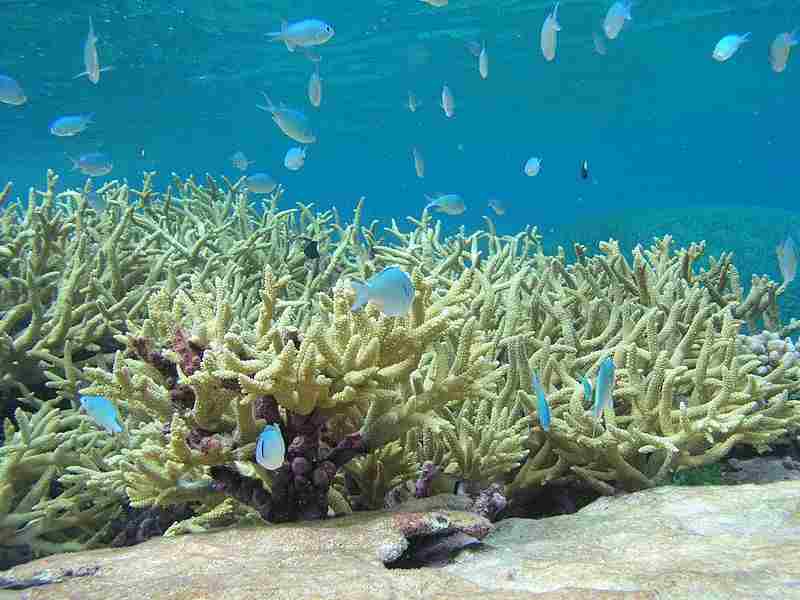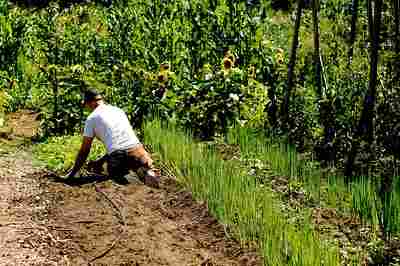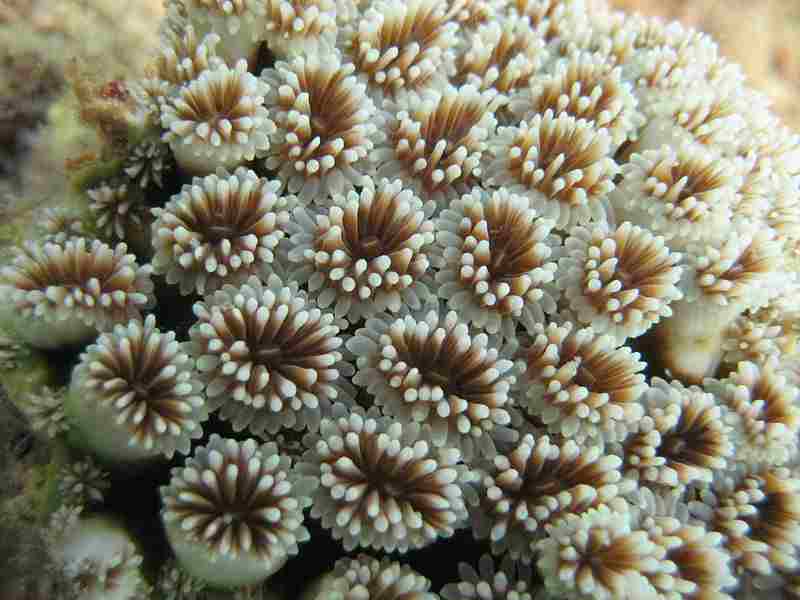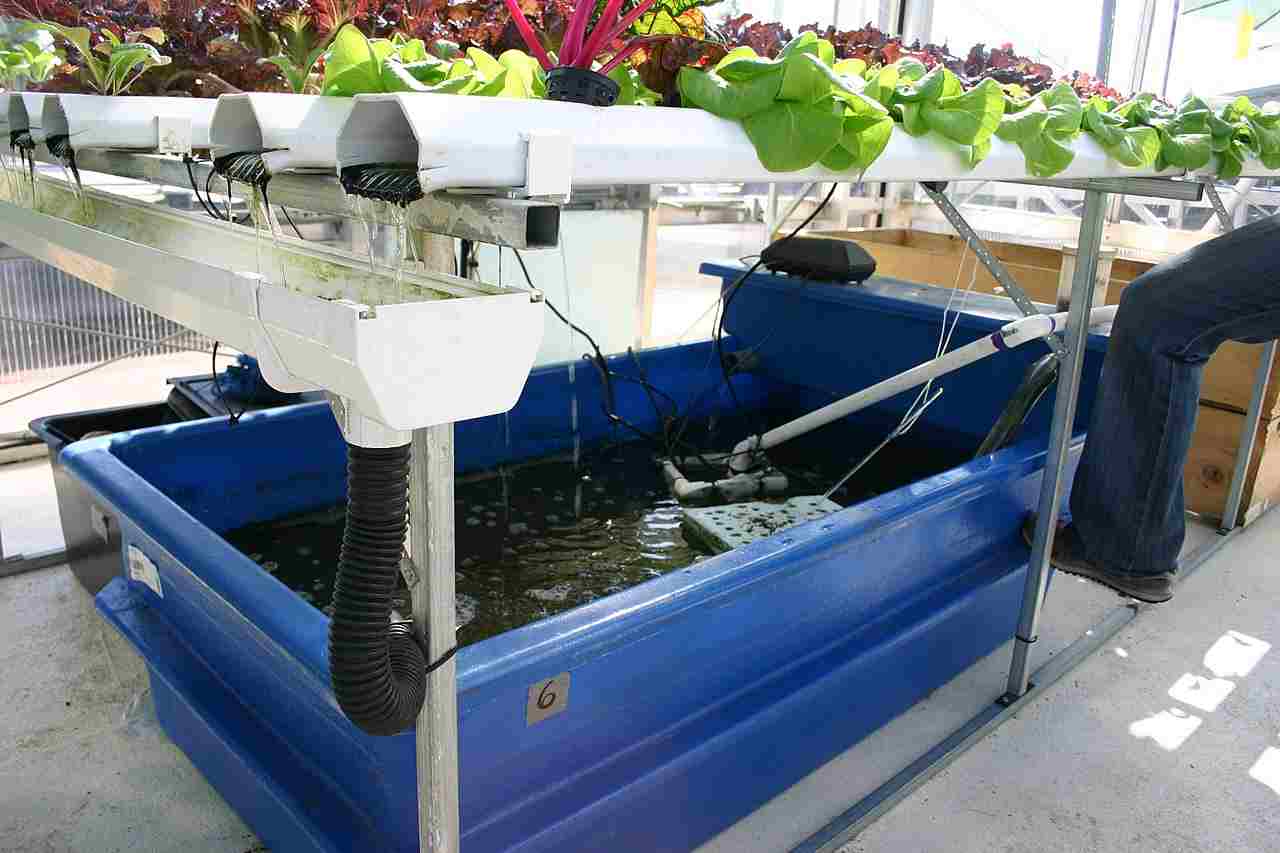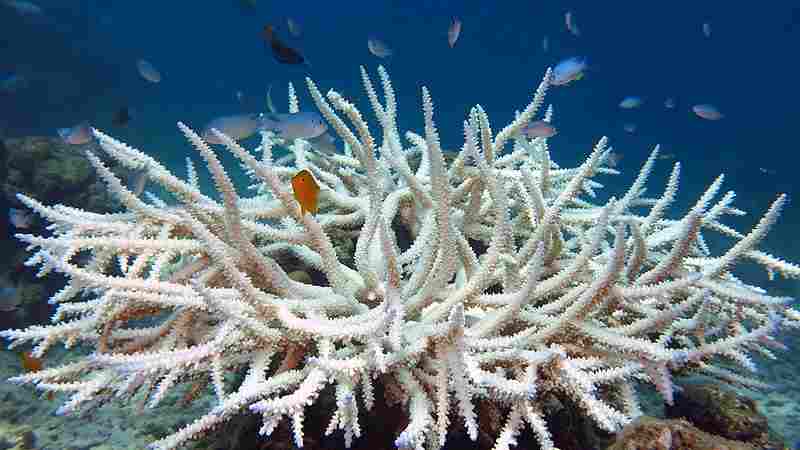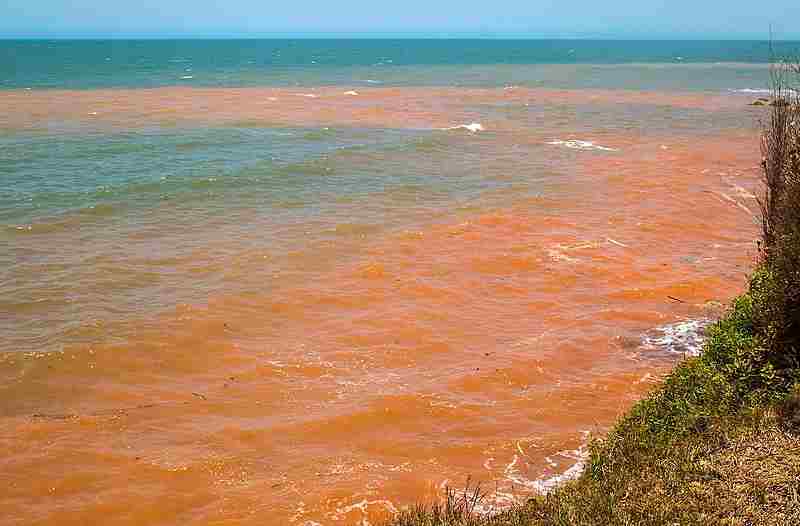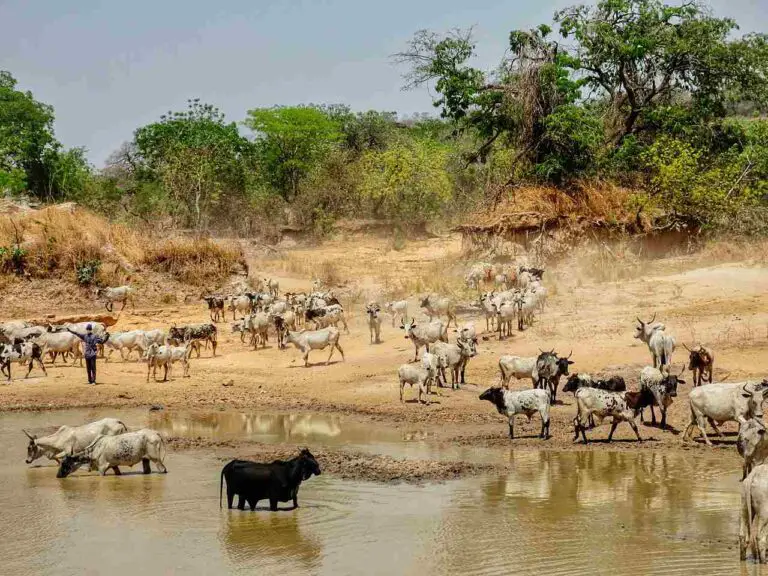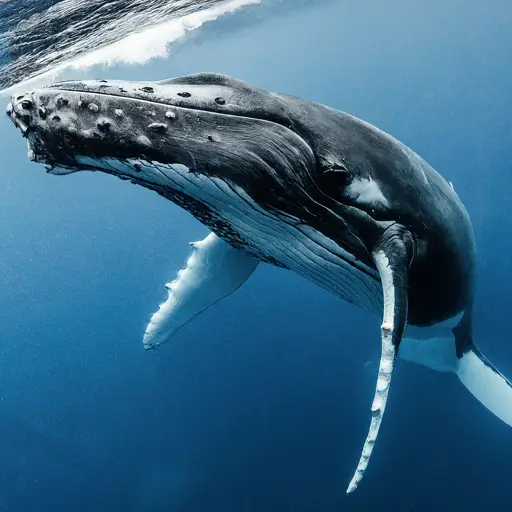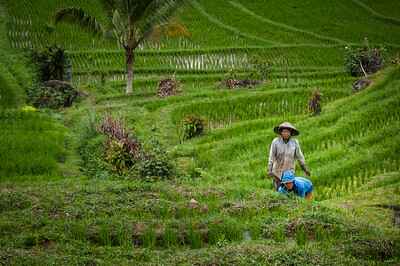19+ Advantages and Disadvantages of Aquaculture Discussed
Advantages of aquaculture are; contribution to food security, optimized runoff usage, reduced wild fish harvesting, job creation, fiscal benefits, export opportunities, sustenance for farmers, contribution to habitat restoration, recovery of wild populations, awareness on aquatic habitat protection, and scientific knowledge acquisition.
Disadvantages of aquaculture are; influx of invasive species, certification difficulty, environmental pollution, significant greenhouse emissions, challenges of wastewater management, public health risks, disease transfer to wild aquatic populations, ecosystem degradation and toxic accumulation of antibiotics.
Environmental impacts of aquaculture are; nutrient buildup in water bodies, oxygen depletion due to algal growth, biochemical pollution, and greenhouse gas emissions.
Economic benefits of aquaculture are; opportunities for investment and trade, creation of employment, contribution to local food supply, strengthening of agro-export, contribution to food self-sufficiency, poverty alleviation, and contribution to infrastructure development.
This article discusses the advantages and disadvantages of aquaculture, as outlined below;
-Advantages of Aquaculture
1). Contribution to Food Security
Aquaculture significantly contributes to food security by providing a reliable and sustainable source of seafood.
This practice involves the cultivation of aquatic organisms such as fish, shellfish, and plants in controlled environments.
Factors that can be highlighted in relation to the food security benefit of aquaculture include; increased protein supply, efficient resource utilization, reduced pressure on wild fisheries, year-round production, and diversification of diets.
Aquaculture is a vital source of high-quality protein, meeting the nutritional needs of a growing global population. Fish and shellfish are rich in essential amino acids, vitamins, and minerals, making them valuable components of a balanced diet.
Often, aquaculture requires less land and freshwater compared to crop agriculture. By efficiently utilizing resources, it helps address the challenges of land scarcity and water availability, contributing to sustainable food production.
Aquaculture helps alleviate the strain on natural fish stocks by providing an alternative source of seafood. Overfishing and depletion of wild fisheries are global concerns, and aquaculture plays a crucial role in meeting demand without further compromising marine ecosystems.
Unlike traditional fisheries that are subject to seasonal fluctuations, aquaculture enables year-round production. This consistent output helps stabilize seafood availability, reducing the risk of food shortages during certain times of the year.
The aquaculture industry generates employment opportunities in coastal and inland areas, particularly in developing countries. This not only supports local economies but also contributes to poverty reduction and community resilience.
Aquaculture offers a diverse range of seafood options, allowing for a broader and more varied diet. This diversity is essential for ensuring access to different nutrients and reducing the risk/level of food insecurity.
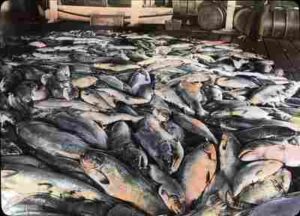
2). Optimizes the Use of Runoff
Aquaculture optimizes the use of runoff by efficiently managing and utilizing nutrient-rich water from various sources.
Runoff, which often contains organic matter and nutrients, can be redirected into aquaculture systems, offering several benefits which include; nutrient recycling, water quality improvement, increased efficiency in land use, minimization of environmental pollution, and enhanced productivity. Below is a rundown of these benefits;
Aquaculture systems can utilize runoff water containing nutrients like nitrogen and phosphorus to enhance the growth of aquatic organisms. This nutrient recycling not only reduces environmental impact but also contributes to the sustainable management of water resources.
By capturing and treating runoff water, aquaculture helps improve overall water quality. The process involves removing pollutants and sediment before directing the water into aquaculture facilities, reducing the negative effects of runoff on natural ecosystems.
Integrating aquaculture with runoff management allows for more efficient land use. Areas prone to runoff can be repurposed for aquaculture, maximizing the productive use of land while minimizing the environmental impact associated with uncontrolled runoff.
Properly managed aquaculture systems help mitigate the negative environmental effects of runoff, such as nutrient loading and contamination of water bodies. This approach contributes to the overall health and sustainability of aquatic ecosystems.
Runoff water, when treated and channeled into aquaculture systems, provides a nutrient-rich environment for aquatic organisms. This can result in increased productivity and yield in aquaculture, contributing to food production while minimizing the environmental footprint.
3). Reduces Harvesting of Wild Fish
Aquaculture reduces the harvesting pressure on wild fish populations by providing an alternative and sustainable source of seafood.
This contributes to the conservation of marine ecosystems in several ways, including through reliable seafood supply, mitigation of overfishing, preservation of biodiversity, conservation of ecosystems, and decreased bycatch.
Aquaculture meets the increasing demand for seafood without overreliance on wild fish stocks. By cultivating fish and shellfish in controlled environments, aquaculture provides a consistent and predictable source of seafood, reducing the need for extensive harvesting from the oceans.
Overfishing is a global concern threatening the balance of aquatic ecosystems. Aquaculture acts as a buffer by offering a controlled and regulated means of seafood production, helping alleviate the pressure on wild fish populations and allowing them to replenish and recover.
By lessening the dependence on wild fisheries, aquaculture supports the preservation of species richness and biodiversity in oceans. It helps maintain the ecological balance by reducing the impact of excessive fishing on non-target species and the overall health of marine habitats.
Aquaculture minimizes the disruption of natural ecosystems caused by extensive fishing practices. Preserving the integrity of marine environments is essential for sustaining the diversity of species and ensuring the overall health of oceans.
Unlike traditional fishing methods that can result in significant bycatch (unintentional capture of non-target species), aquaculture operations are designed to minimize such ecological side effects. This contributes to the conservation of marine life beyond the intended cultured species.
4). Job Creation
Aquaculture significantly contributes to job creation by generating employment opportunities in various sectors of the industry.
Employment opportunities in aquaculture include; farm operations, processing and packaging, distribution and marketing, research and development, support services, and community engagement.
Aquaculture facilities require skilled workers for tasks such as feeding, monitoring water quality, and ensuring the overall well-being of aquatic organisms. These on-site jobs contribute to employment in local communities.
The processing and packaging of aquaculture products create jobs in facilities that clean, prepare, and package seafood for distribution. This sector plays a crucial role in adding value to the products before they reach consumers.
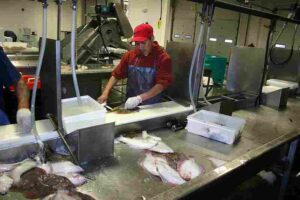
Jobs are created in the distribution and marketing of aquaculture products, involving transportation, sales, and promotion. This contributes to the supply chain and supports the economic viability of the aquaculture industry.
The growth of the aquaculture industry relies on ongoing research and development. Jobs are created for scientists, technicians, and researchers who work on improving aquaculture techniques, developing new technologies, and ensuring sustainability.
Various support services, such as equipment manufacturing, veterinary services, and consultancy, contribute to the success of aquaculture operations. These services create additional job opportunities within the industry.
Aquaculture often integrates with local communities, creating opportunities for community engagement and employment. This can include educational outreach, tourism related to aquaculture activities, and other community development initiatives.
5). Fiscal Benefits
Aquaculture provides fiscal benefits by contributing to economic growth, government revenue, and cost savings. Key aspects of this advantage include; economic growth, government revenue, export revenue, reduced import dependency, and cost-effective protein production.
The aquaculture industry stimulates economic growth by generating income and employment opportunities. The expansion of aquaculture activities contributes to increased economic output, supporting local and national economies.
Taxes and fees associated with aquaculture operations contribute to government revenue. As the industry grows, governments can collect revenue from licensing, permits, and taxes on production, contributing to public funds for various initiatives.
Aquaculture products often serve as valuable exports, contributing to a country's trade balance. By participating in the global seafood market, nations engaged in aquaculture can earn foreign exchange and strengthen their fiscal position.
Meeting domestic seafood demand through aquaculture reduces reliance on imported products. This can result in cost savings for governments and consumers, positively impacting trade balances and enhancing fiscal stability.
Aquaculture provides an efficient means of protein production compared to some traditional forms of agriculture. This efficiency can lead to cost savings in addressing challenges of food security, reducing the economic burden associated with addressing malnutrition.
6). Export Opportunities
Aquaculture creates export opportunities through; diverse product offerings, consistent supply, quality assurance, economic contribution, and market expansion.
Aquaculture provides a wide range of seafood products, meeting diverse consumer preferences. This variety enhances export potential as countries can offer different types of fish and shellfish to global markets.
Unlike wild fisheries, aquaculture allows for a more reliable and consistent supply of seafood. This stability in production enables countries to establish and maintain steady export relationships, meeting international demand throughout the year.
Controlled aquaculture environments enable producers to maintain high standards of quality and safety in their products. Meeting stringent international regulations enhances the reputation of aquaculture products, facilitating easier access to global markets.
Aquaculture's economic impact extends beyond local markets, as it contributes to a country's export earnings. The export of aquaculture products enhances foreign exchange reserves, supporting overall economic stability.
Aquaculture allows countries to expand their market presence by catering to the growing global demand for seafood. By participating in international trade, nations engaged in aquaculture can capitalize on the increasing popularity of aquaculture products worldwide.
7). Sustenance for Subsistence Farmers
Aquaculture provides sustenance for subsistence farmers by diversifying diets, generating income, reducing dependency on wild fisheries, utilizing small spaces, and improving livelihoods.
The practice of aquaculture introduces diverse and nutritious food options, enriching the diets of subsistence farmers and their communities with essential proteins, vitamins, and minerals.
Subsistence farmers engaged in aquaculture can generate additional income by selling surplus fish or other aquaculture products. This economic contribution enhances their financial resilience and ability to meet other basic needs.
Aquaculture lessens the reliance on unpredictable and sometimes declining wild fisheries, ensuring a more consistent and sustainable source of food for subsistence farmers.
Aquaculture systems, such as backyard ponds or small-scale fish farming, can be implemented in limited spaces, making it accessible to subsistence farmers with small land holdings.
The integration of aquaculture diversifies livelihoods for subsistence farmers, providing an alternative source of food and income. This resilience is particularly valuable in regions prone to climate variability and other agricultural uncertainties.
8). Contributes to Habitat Restoration
Aquaculture contributes to habitat restoration by reducing pressure on wild habitats, enhancing regional water quality, promoting sustainable practices, creating artificial habitats, as well as providing research and conservation initiatives.
By providing an alternative source of seafood, aquaculture helps alleviate the pressure on wild habitats and reduces the impact of overfishing, preserving the natural ecosystems and biodiversity.
Well-managed aquaculture systems often involve water treatment processes, improving the quality of water before it is released. This contributes to the restoration and maintenance of healthy aquatic environments.
Many aquaculture operations prioritize sustainability, employing practices that minimize environmental impact. This commitment to sustainability aligns with habitat restoration efforts by ensuring responsible resource use.
Some forms of aquaculture involve the creation of artificial habitats, such as oyster reefs or fish aggregating devices. These structures provide shelter and support the recovery of local marine life.
Aquaculture research often includes efforts to understand and mitigate environmental impacts. This knowledge contributes to broader conservation initiatives aimed at restoring and protecting natural habitats.
9). Recovery of Depleted Wild Populations
Aquaculture plays a crucial role in the recovery of depleted wild populations by providing a sustainable alternative, supporting stock enhancement programs, reducing overfishing pressure, supporting conservation through captive breeding, and contributing to research on reproductive biology.
Aquaculture offers a sustainable and controlled environment for the cultivation of seafood, reducing the need to rely heavily on depleted wild fish populations and allowing them to recover over time.
Some aquaculture initiatives include stock enhancement programs where cultured organisms are released into the wild to bolster natural populations. This contributes to the recovery of depleted species and helps restore ecological balance.
By meeting the demand for seafood through aquaculture, the pressure on depleted wild populations is alleviated, allowing for the recovery of these species and the ecosystems they inhabit.
Aquaculture often involves captive breeding programs for endangered or depleted species. This not only supports conservation efforts but also provides a means to reintroduce these species into their natural habitats.
Aquaculture research contributes to a better understanding of the reproductive biology of various species, aiding in the development of strategies to enhance natural reproduction and recovery in the wild.
10). Raises Awareness About Aquatic Habitat Protection and Rehabilitation
Aquaculture raises awareness about aquatic habitat protection and rehabilitation by supporting educational outreach, showcasing sustainable practices, fostering participation in conservation programs, contributing to research, and promoting ecosystem health.
Aquaculture operations often engage in educational initiatives, informing communities and stakeholders about the importance of protecting and rehabilitating aquatic habitats. This increased awareness fosters a sense of responsibility and stewardship.
Also, aquaculture facilities that prioritize sustainable practices serve as examples of environmentally responsible operations. By showcasing these practices, they encourage awareness and adoption of methods that promote habitat protection and rehabilitation.
Many aquaculture initiatives actively participate in and support broader conservation programs focused on the protection and rehabilitation of aquatic habitats. This involvement raises awareness at both local and global levels.
Aquaculture research often addresses environmental impacts and conservation measures. Sharing findings and promoting research outcomes contribute to a broader understanding of aquatic habitat protection and rehabilitation needs.
Aquaculture's dependence on healthy ecosystems underscores the importance of maintaining and restoring natural habitats. This inherent link between aquaculture and ecosystem health serves as a reminder of the interconnectedness of human activities and aquatic environments.
11). Contributes to Scientific Knowledge On Aquatic Ecosystems
Aquaculture contributes to scientific knowledge on aquatic ecosystems by providing research opportunities, monitoring water quality, supporting disease management, and genetic studies.
Aquaculture operations provide controlled environments for scientific research, offering opportunities to study the biology, behavior, and ecological interactions of aquatic organisms, thereby advancing understanding of aquatic ecosystems.
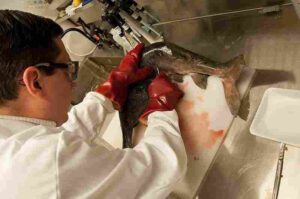
Also, aquaculture necessitates rigorous monitoring of water quality. Data collected from these efforts contribute valuable insights into the dynamics of aquatic environments, aiding in the assessment and management of natural ecosystems.
Aquaculture often involves research on disease prevention and management. Scientific studies in this area contribute to broader knowledge about aquatic diseases, their transmission, and potential impacts on wild populations.
Schemes in aquaculture that involve selective breeding and genetic improvement contribute to genetic studies. This research enhances understanding of the genetic diversity of aquatic species and its implications for population dynamics.
Studying the interactions between cultured species and their surroundings in aquaculture systems provides insights into broader ecosystem dynamics. This knowledge aids in the development of sustainable aquaculture practices and contributes to the conservation of natural ecosystems.
-Disadvantages of Aquaculture
1). Contribution to the Influx of Invasive Species
Aquaculture can contribute to the influx of invasive species through escape events, ballast water discharge, aquaculture trade, and exchange of water between systems.
Inadequate containment measures in aquaculture facilities may lead to the escape of cultured species into surrounding water bodies, potentially introducing non-native species to new environments.
Aquaculture vessels may inadvertently transport invasive species through ballast water discharge, facilitating the spread of non-native organisms to new areas during routine operations.
The global movement of aquaculture products and equipment can serve as a pathway for the unintentional introduction of invasive species to new regions, particularly when proper biosecurity measures are not in place.
Water exchanges between aquaculture systems and natural water bodies may transfer invasive species, especially if there is insufficient control or screening mechanisms in place.
2). Occasional Certification Difficulty
Aquaculture businesses and facilities may encounter occasional certification difficulties due to environmental impact concerns, chemical use and residue management, social and labor practices, supply chain transparency, and issues of adherence to regulations.
Certification processes often assess the environmental impact of aquaculture operations. Challenges may arise when addressing issues related to habitat alteration, water quality, and the potential escape of cultured species.
Certification standards may scrutinize the use of chemicals, antibiotics, and other substances in aquaculture. Ensuring compliance with residue limits and responsible chemical management can pose certification challenges.
Certification may involve scrutiny of social and labor practices within aquaculture operations. Difficulties may arise in ensuring fair labor conditions, community engagement, and adherence to social responsibility standards.
Establishing and maintaining transparency throughout the aquaculture supply chain, from sourcing to distribution, can be challenging. Certification bodies may require comprehensive documentation and traceability, posing difficulties in meeting these standards.
Compliance with local and international regulations is crucial for certification. Aquaculture operations may face challenges in navigating complex regulatory frameworks, potentially leading to certification difficulties.
3). May Contribute to Environmental Pollution
Aquaculture may contribute to environmental pollution through waste discharge, chemical usage, escape and introductions, sedimentation, as well as energy consumption.
Accumulation of uneaten feed, excrement, and other organic waste from aquaculture facilities can lead to nutrient enrichment in surrounding waters, potentially causing water quality degradation.
The use of chemicals, such as antibiotics, pesticides, and disinfectants in aquaculture, can result in the discharge of residues into aquatic ecosystems, posing risks to non-target organisms and contributing to pollution.
Escape events of cultured species or the introduction of non-native species can disrupt local ecosystems, potentially leading to ecological imbalances and biodiversity loss.
Aquaculture activities may contribute to sedimentation in water bodies, particularly in areas with poor sediment control measures. Excessive sedimentation can smother habitats and negatively impact aquatic life.
Intensive aquaculture operations may require significant energy inputs for aeration, heating, and other processes, contributing to environmental pollution through the production and use of energy, especially if derived from non-renewable sources.
4). Poor Practices May Yield Significant Emissions
Aquaculture practices, when poorly managed, may yield significant emissions, contributing to environmental concerns. Factors that highlight this disadvantage include; feed production, waste generation, energy use, chemical usage, and invasive species dynamics.
The production of aquaculture feed, especially if reliant on resource-intensive ingredients like fishmeal, can contribute to greenhouse gas emissions, deforestation, and overfishing.
Improper waste management in aquaculture, including the accumulation of uneaten feed and organic matter, can lead to the release of pollutants and nutrients, causing water pollution and negatively impacting aquatic ecosystems.
Intensive aquaculture operations often require substantial energy inputs for activities such as aeration, heating, and water circulation. If the energy comes from non-renewable sources, it can result in significant carbon emissions.
Indiscriminate use of chemicals, antibiotics, and disinfectants in aquaculture can lead to the release of harmful substances into the environment, impacting water quality and aquatic life.
Escapes of cultured species and the introduction of non-native species can disrupt ecosystems, leading to biodiversity loss and ecological imbalances, with potential long-term environmental consequences.
5). Wastewater Management is Often Challenging
Aquaculture can pose challenges in wastewater management due to nutrient-rich effluents, organic waste accumulation, pathogen discharge, sedimentation issues, and infrastructure costs.
Wastewater from aquaculture operations often contains high levels of nutrients, such as nitrogen and phosphorus, which, if not properly managed, can lead to nutrient enrichment in receiving water bodies.
Accumulation of organic waste, including uneaten feed and fecal matter, can contribute to water pollution and degrade water quality if not effectively removed or treated.
Wastewater may contain pathogens, chemicals, and antibiotic residues from aquaculture activities, presenting challenges in treating and preventing the discharge of potentially harmful substances.
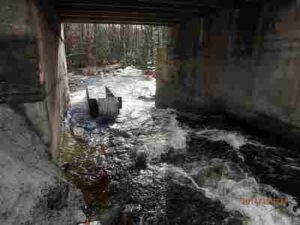
Sedimentation, caused by suspended particles in wastewater, can affect water clarity and quality, posing challenges in maintaining healthy aquatic ecosystems.
Implementing effective wastewater management systems requires infrastructure investments, and for small-scale aquaculture operations, these costs can be challenging to bear, leading to suboptimal waste treatment practices.
6). Poorly Regulated Fishery Products are a Threat to Public Health
Poorly regulated aquaculture products can pose a threat to public health through residue concerns, disease transmission, inadequate quality control, mislabeling and fraud, environmental contamination and human health risks.
Inadequate regulation may result in the presence of residues such as antibiotics, chemicals, and contaminants in aquaculture products, potentially leading to health risks for consumers.
Poorly regulated aquaculture operations may contribute to the spread of diseases among cultured species, raising concerns about the transmission of pathogens that could affect both aquatic animals and humans through consumption.
Insufficient regulation can lead to lax quality control measures, increasing the likelihood of contamination, spoilage, and the presence of harmful microorganisms in aquaculture products.
Poor regulatory oversight may facilitate mislabeling and fraudulent practices in the marketing of aquaculture products, leading to inaccurate information about the origin, species, or safety of the seafood.
If aquaculture operations result in environmental pollution, the contaminants introduced into water bodies may adversely affect aquatic ecosystems and, in turn, pose risks to human health through the consumption of contaminated seafood.
7). Fish Farms may Transfer Diseases to Wild Aquatic Populations
Aquaculture can facilitate the transfer of diseases to wild aquatic populations through pathogen breeding and discharge, escape events, genetic interactions, and as a result of proximity to wildlife habitats.
Aquaculture facilities may release pathogens into surrounding waters through wastewater discharge, potentially exposing wild aquatic species to diseases originating from cultured organisms.
Escapes of cultured fish from aquaculture facilities carrying diseases can introduce pathogens to wild populations, posing a risk of infection and spreading diseases among native species.
Cultured species, if escaping and interbreeding with wild populations, can introduce novel genetic traits, potentially affecting the resilience of wild populations to diseases and environmental stressors.
The spatial proximity of aquaculture facilities to natural water bodies increases the risk of disease transmission to wild populations, particularly if biosecurity measures are insufficient.
8). Risk of Natural Ecosystem Degradation
Aquaculture poses the risk of natural ecosystem degradation through habitat alteration, chemical usage and runoff, escapes and invasive species, waste accumulation, and sedimentation issues.
Aquaculture infrastructure and practices, such as pond construction and water channel modification, can alter natural habitats, potentially leading to the degradation of ecosystems.
The use of chemicals, including fertilizers and pesticides, in aquaculture operations may contribute to water pollution and nutrient runoff, negatively impacting natural ecosystems.
Escapes of cultured species and the introduction of non-native species can disrupt local ecosystems, leading to habitat degradation, intense competition for resources, and potential declines in native biodiversity.
Improper waste management in aquaculture, including the accumulation of uneaten feed and organic matter, can result in nutrient enrichment and oxygen depletion in water bodies, harming natural habitats.
Sedimentation caused by suspended particles from aquaculture operations can smother aquatic habitats, affecting the health of benthic ecosystems and overall ecosystem functioning.
9). Excessive Antibiotic Usage Often has Toxic Effects
Aquaculture can cause toxic effects due to excessive antibiotic usage, leading to residue accumulation, development of antibiotic-resistant pathogens, environmental contamination, and disruption of microbial communities.
Overuse of antibiotics in aquaculture may result in the presence of antibiotic residues in cultured organisms, posing risks to human health through the consumption of contaminated seafood.
Excessive antibiotic use can contribute to the development of antibiotic-resistant bacteria in aquaculture systems, potentially compromising the effectiveness of these antibiotics in treating bacterial infections in both aquatic animals and humans.
Antibiotics can be released into the surrounding environment through wastewater discharge from aquaculture facilities, leading to water pollution and potentially affecting non-target organisms in aquatic ecosystems.
Indiscriminate antibiotic use can disrupt the natural microbial communities in aquaculture environments, impacting the balance of beneficial and harmful microorganisms and affecting overall ecosystem health.
-Overview of the Environmental Impacts of Aquaculture
1). Nutrient Buildup in Water Bodies
Aquaculture can lead to nutrient buildup in water bodies as an environmental impact, which is linked to uneaten feed and excrement, algal blooms, eutrophication, and impact on biodiversity.
Excessive nutrients from uneaten feed, fecal matter, and other organic waste in aquaculture systems can accumulate in water bodies, potentially causing nutrient enrichment.
Increased nutrient levels may stimulate the growth of algae, leading to algal blooms. These blooms can negatively impact water quality, deplete oxygen levels, and harm aquatic ecosystems.
Nutrient buildup contributes to eutrophication, an over-fertilization of water bodies, causing imbalances that can lead to oxygen depletion, fish kills, and disruptions to the overall ecological balance.
Elevated nutrient levels can favor the growth of certain species over others, potentially leading to shifts in aquatic biodiversity and the composition of species in affected ecosystems.
2). Oxygen Depletion Due to Algal Growth
Aquaculture can contribute to oxygen depletion in water bodies through algal blooms, increased biodegradation rate, fish stress and mortality.
Nutrient runoff from aquaculture operations can lead to excessive algal growth in water bodies.
The subsequent decay of these algae consumes oxygen, leading to reduced oxygen levels in the water.
Oxygen depletion negatively affects fish and other aquatic organisms, causing stress, reduced growth, and, in extreme cases, mortality.
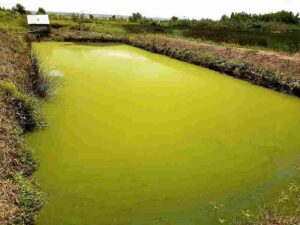
3). Structural Alteration of Coastal Ecosystems
Aquaculture can lead to the structural alteration of coastal ecosystems through infrastructure development, habitat loss, and changes in water flow.
Construction of aquaculture facilities, such as ponds, cages, and embankments, can modify natural coastal habitats, potentially disrupting ecosystems and impacting biodiversity.
The transformation of coastal areas for aquaculture purposes may result in the loss of critical habitats for various species, affecting the overall structure and functioning of coastal ecosystems.
Aquaculture activities can alter water flow patterns, affecting sediment transport, nutrient cycling, and the distribution of species in coastal environments.
4). Biological and Chemical Pollution
Aquaculture can cause biological and chemical pollution through organic waste, pathogens, and inorganic chemical inputs.
Excessive organic waste, including uneaten feed and fecal matter, can lead to biological pollution, compromising water quality and promoting the growth of harmful pathogens.
The use of chemicals, antibiotics, and disinfectants in aquaculture can contribute to chemical pollution, potentially leading to the presence of residues and contaminants in water bodies, affecting both aquatic organisms and human consumers.
Effective waste management (including water treatment), responsible chemical use, and monitoring are crucial to mitigate these environmental impacts and ensure the sustainability of aquaculture practices.
5). Greenhouse Gas Emissions
Aquaculture can contribute to greenhouse gas emissions through energy use during processes like feed production.
Intensive aquaculture operations may rely on energy-intensive processes, leading to emissions, especially if the energy comes from non-renewable sources.
The production of aquaculture feed, particularly if derived from resource-intensive ingredients like fishmeal, can contribute to greenhouse gas emissions, deforestation, and overfishing.
-Economic Benefits of Aquaculture
1). Opportunities for Investment and Trade
Aquaculture offers opportunities for investment and trade as an economic benefit by creating avenues for exportation, employment, income generation, investment attraction, and diversification of economies.
Aquaculture products, such as fish and shellfish, present significant export potential, contributing to international trade and enhancing a country's economic competitiveness in global markets.
The growth of aquaculture operations generates employment opportunities in various sectors, including farm operations, processing, distribution, and support services, contributing to economic development and stability.
Aquaculture provides a source of income for individuals and communities involved in the industry, supporting livelihoods and contributing to poverty alleviation.
The expansion of aquaculture presents investment opportunities in infrastructure, technology, research, and innovation, attracting capital that stimulates economic growth and development.
Countries engaged in aquaculture diversify their economies by adding a valuable and sustainable sector, reducing dependency on traditional industries and enhancing overall economic resilience.
2). Creation of Employment
Aquaculture creates employment opportunities, contributing to economic development. Opportunities for employment in aquaculture are linked to areas like farm operations, product processing, marketing, and distribution.
Jobs are generated in various aspects of aquaculture, including daily farm activities such as feeding, monitoring, and maintaining optimal conditions for aquatic organisms.
Employment is created in processing plants where aquaculture products are cleaned, prepared, and packaged for distribution, adding value to the final products.
Jobs are generated in the distribution and marketing of aquaculture products, involving transportation, sales, and promotion in local and international markets.
Aquaculture operations contribute to employment in research and development, fostering innovation, improving techniques, and ensuring the industry's long-term sustainability.
Aquaculture often integrates with local communities, creating opportunities for community engagement, education, and tourism related to aquaculture activities.
3). Contribution to Local Food Supply to Meet Rising Demand
Aquaculture contributes to the local food supply, addressing rising demand by increasing production, reducing reliance on wild aquatic populations, diversifying food products, increasing availability, and stabilizing prices.
Aquaculture provides a consistent and controlled supply of seafood, helping meet the growing demand for fish and shellfish in local markets.
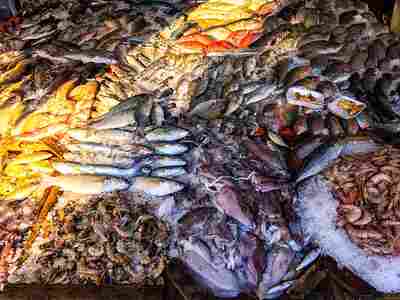
By cultivating fish and other aquatic organisms in controlled environments, aquaculture lessens the pressure on wild fish stocks, ensuring a more reliable source of local seafood.
The availability of aquaculture products diversifies local diets, offering a nutritious protein source and contributing to food security in communities.
Local aquaculture production helps stabilize seafood prices, reducing dependency on fluctuating global markets and enhancing food affordability for local populations.
4). Strengthening of Agricultural Export Sector
Aquaculture strengthens the agricultural export sector by creating export opportunities, supporting foreign exchange earnings, market diversification and job creation.
Aquaculture generates exportable products, such as fish and shellfish, contributing to the agricultural export sector and enhancing a country's economic competitiveness in global markets.
The export of aquaculture products generates foreign exchange earnings, bolstering the national economy and providing financial resources for other development initiatives.
Aquaculture products diversify the range of agricultural exports, reducing dependence on traditional commodities and expanding market opportunities for a country's agricultural sector.
The growth of aquaculture operations to meet export demands creates employment in various sectors, supporting economic development and stability.
5). Contribution to Regional Self Sufficiency in the Area of Food Products
Aquaculture contributes to regional self-sufficiency in food products by supporting food production, diversification of diets, economic stability, and reduced dependency on imports.
Aquaculture provides a consistent and locally produced source of fish and seafood, reducing the reliance on external sources and contributing to regional food security.
The availability of aquaculture products diversifies regional diets, offering a nutritious protein source and enhancing overall food diversity.
Increased local production in aquaculture supports regional economic stability by creating jobs, generating income, and fostering a resilient food supply chain.
Aquaculture helps minimize dependency on imported seafood, ensuring a more self-sufficient and sustainable approach to meeting regional food demands.
6). Potential Alleviation of Poverty
Aquaculture holds the potential to alleviate poverty by stimulating income generation, job creation, community development, and diversification of livelihoods.
Engaging in aquaculture provides a source of income for individuals and communities, particularly in regions where the industry is prevalent.
Aquaculture operations generate employment opportunities in various sectors, supporting livelihoods and contributing to poverty reduction.
The growth of aquaculture can lead to improved infrastructure, education, and healthcare in communities, fostering overall socio-economic development.
Aquaculture allows for diversification of livelihoods, reducing vulnerability to economic fluctuations and providing a more resilient source of income.
7). Contribution to Infrastructure Development
Aquaculture contributes to infrastructure development by fostering the construction of facilities, establishment of transportation networks, energy and utility systems, as well as research and educational means.
The establishment of aquaculture facilities, such as artificial ponds, cages, and processing plants, requires infrastructure development, stimulating local construction and related industries.
The distribution of aquaculture products involves transportation infrastructure, including roads and logistics, contributing to the improvement and expansion of transportation networks.
Aquaculture operations may necessitate energy and utility infrastructure, promoting investment and development in these sectors to support the industry's growth.
The need for research and educational initiatives in aquaculture fosters the development of relevant infrastructure, including laboratories and educational institutions.
Conclusion
Advantages of aquaculture are;
1. Contribution to Food Security
2. Aquaculture Optimizes the Use of Runoff
3. Reduces Harvesting of Wild Fish
4. Job Creation
5. Fiscal Benefits
6. Export Opportunities
7. Sustenance for Subsistence Farmers
8. Contributes to Habitat Restoration
9. Instrumental in Recovery of Depleted Wild Populations
10. Raises Awareness About Aquatic Habitat Protection and Rehabilitation
11. Contributes to Scientific Knowledge On Aquatic Ecosystems
Disadvantages of aquaculture are;
1. Contribution to the Influx of Invasive Species
2. Occasional Certification Difficulty
3. May Contribute to Environmental Pollution
4. Poor Practices may Yield Significant Emissions
5. Wastewater Management is Often Challenging
6. Poorly Regulated Fishery Products are a Threat to Public Health
7. Fish Farms may Transfer Diseases to Wild Aquatic Populations
8. Risk of Natural Ecosystem Degradation
9. Excessive Antibiotic Usage Often has Toxic Effects
Environmental impacts of aquaculture are;
1. Nutrient Buildup in Water Bodies
2. Oxygen Depletion Due to Algal Growth
3. Structural Alteration of Coastal Ecosystems
4. Biological and Chemical Pollution
5. Greenhouse Gas Emissions
Economic benefits of aquaculture are;
1. Opportunities for Investment and Trade
2. Creation of Employment
3. Contribution to Local Food Supply to Meet Rising Demand
4. Strengthening of Agricultural Export Sector
5. Contribution to Regional Self Sufficiency in the Area of Food Products
6. Potential Alleviation of Poverty
7. Contribution to Infrastructure Development
